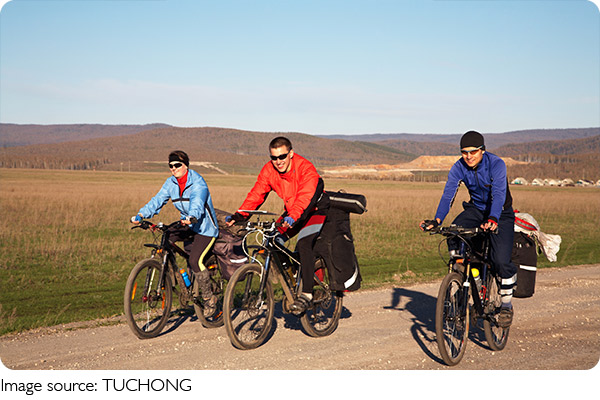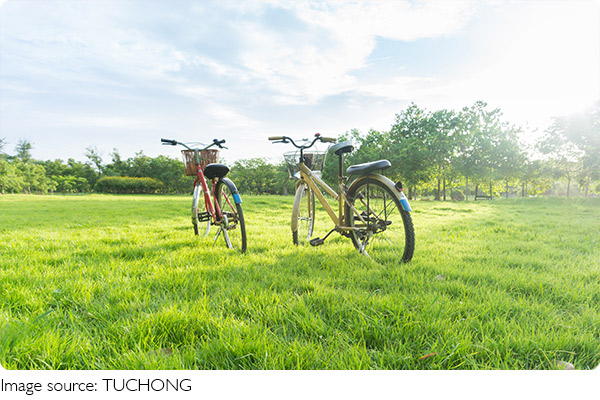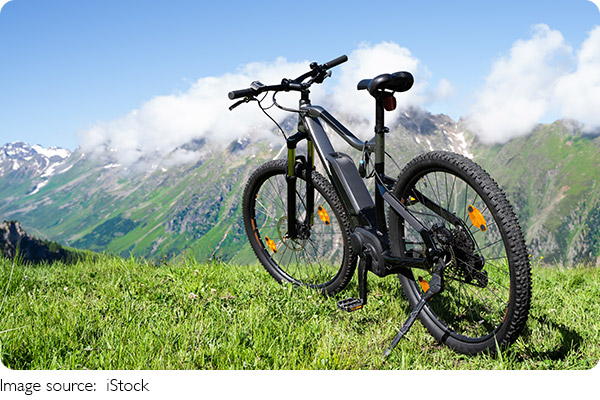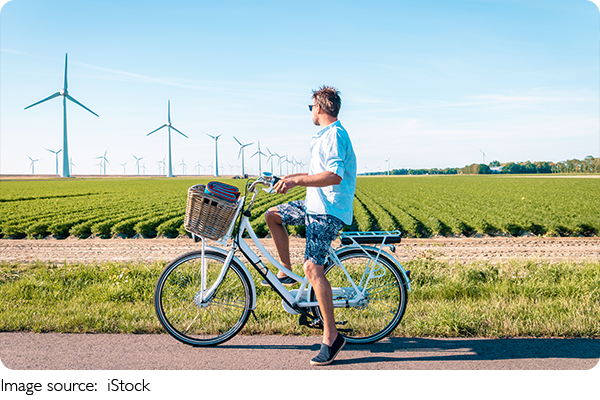Outdoor Cycling Basics

Have you ever seen someone gliding through the streets or breezing past in the countryside on a bike and thought, “That looks amazing—I want to try that too”? If so, you're in the right place.
Today, we're diving into the world of outdoor cycling, especially for those of us just starting out. Whether you're riding for fun, fitness, or a bit of adventure, we'll walk through the key steps to help you feel confident and safe out there.
10 Tips I Wish I knew When I started Cycling
Video by CADE Media
Choose the Right Bike
First things first—your bike is your best buddy on this journey, so picking the right one matters. There are several types to choose from, but for beginners, a hybrid bike is a great option. It's comfy like a mountain bike and smooth like a road bike, which makes it perfect for city paths and country roads alike.
If you're planning to ride mostly on roads, a lightweight road bike might be ideal. For trails or bumpier paths, a mountain bike with wider tires and better shock absorption will be more comfortable. Make sure your bike fits you well—when you sit on the saddle, your feet should touch the ground and your knees should be slightly bent when pedaling.
Safety Gear Is a Must
Before we hit the road, let's talk gear. We always wear a helmet—it's the number one safety item, no excuses. Make sure it fits snugly and doesn't wobble around when you shake your head.
Other essentials include a pair of cycling gloves to protect your hands, reflective gear or bright clothes to help others see you, and bike lights if you're riding early in the morning or near sunset. If you're planning longer rides, think about getting cycling shorts with padding—they seriously make a difference!

Learn Basic Riding Skills
Even if we know how to ride a bike, outdoor cycling brings new challenges. Practice starting, stopping, and turning smoothly in a quiet area like a park or empty parking lot. Get comfortable with your brakes, and remember—press both brakes at the same time, not just the front one.
Learn how to signal with your hands before turning, just like a car uses blinkers. This keeps us safe and helps others know where we're going. And always keep both hands on the handlebars unless you're signaling.
Plan Your Route Wisely
One thing we quickly learned? Planning your ride ahead makes everything easier. Start with short, familiar routes. Use bike paths, parks, or quiet side streets where traffic is light. Apps like Maps or Komoot even have cycling modes to help you find the safest routes.
Bring water, check the weather, and avoid busy rush hours when cars are everywhere. Also, always let someone know where you're going—especially if you're cycling alone.
Know the Traffic Rules
Yes, we're on bikes, but we still share the road with cars and pedestrians. So let's ride responsibly. Always follow traffic signals, ride on the correct side of the road (with the traffic, not against it), and obey stop signs.
Make eye contact with drivers at intersections, and use your bell or voice to let people know you're passing. Being predictable and visible keeps everyone safer.

Take Care of Your Bike
A smooth ride needs a healthy bike. Before every ride, do a quick check: tires (are they inflated?), brakes (do they work properly?), and chain (is it clean and moving smoothly?). Keep a mini repair kit and pump with you just in case.
Every few weeks, clean your bike with a damp cloth and re-lubricate the chain. Regular care helps your bike last longer and ride better.
Build Up Slowly
Don't feel pressured to ride 20 miles on your first try. Start small—maybe 20 minutes around your neighborhood. Gradually increase your time and distance as your confidence and strength grow. Trust us, it gets easier and more fun with every ride.
And hey, it's okay to take breaks or walk your bike up hills. We've all been there. The goal is to enjoy the journey, not race to the finish.
Join a Cycling Community
Want extra motivation? Find local cycling groups or online communities. Riding with others can make the experience more social and safe. Plus, it's a great way to learn tips, discover new routes, and stay consistent.

Ready to Ride, Lykkers?
We hope this beginner's guide helps you feel excited and ready to give outdoor cycling a go. It's not just about getting from point A to point B—it's about the breeze on your face, the rhythm of the road, and the sense of freedom that comes with every ride.
So, Lykkers, what do you think—are you ready to hop on a bike and explore your neighborhood or local trails? Let us know your cycling dreams, or if you have any beginner questions. We'd love to ride this journey with you!
-
 WeightliftingCan You Conquer the Overweight Barbell? Discover How Elite Lifters Push Their Limits Like Never Before!
WeightliftingCan You Conquer the Overweight Barbell? Discover How Elite Lifters Push Their Limits Like Never Before! -
 Taekwondo's Flying KickCan Taekwondo's Flying Kick Really Be Mastered? Discover How Speed and Power Combine for Ultimate Impact!
Taekwondo's Flying KickCan Taekwondo's Flying Kick Really Be Mastered? Discover How Speed and Power Combine for Ultimate Impact! -
 Desert Rally ThrillsExperience the Ultimate Rush: How Desert Off-Road Racing Combines Speed, Adventure, and Extreme Terrain!
Desert Rally ThrillsExperience the Ultimate Rush: How Desert Off-Road Racing Combines Speed, Adventure, and Extreme Terrain!